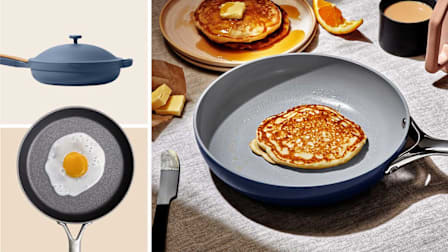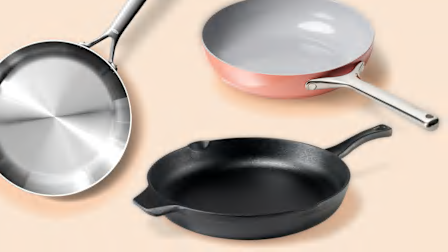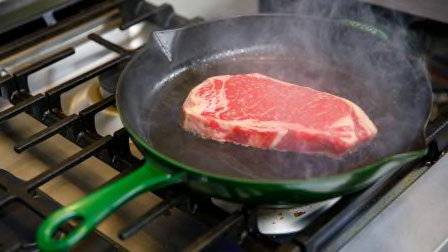How Not to Ruin Your Nonstick Pan
Stick to these nonstick rules to help your favorite frying pan last for years to come
When you shop through retailer links on our site, we may earn affiliate commissions. 100% of the fees we collect are used to support our nonprofit mission. Learn more.

Nonstick pans have plenty of appeal—and that isn’t just because food slides around easily while you’re cooking. In a nationally representative CR survey of 2,158 U.S. adults, Consumer Reports found that some of the top reasons people choose nonstick are that it’s easy to clean (59 percent of nonstick users chose this one) and they can use less oil when cooking (26 percent).
The nonstick coating may be Teflon (also known by its chemical name, polytetrafluoroethylene) or a ceramic finish. Pans labeled “Made without PTFE” in our ratings typically have some form of this coating.
How to Care for a Nonstick Pan
So, what extra care does your nonstick pan need? We interviewed manufacturers and consulted experts from our labs to determine what you should do to ensure that your pan’s coating remains safe to use and turns out flawless fried eggs for years to come.
1. Avoid metal utensils. Metal can scrape or otherwise mar the nonstick surface, causing food to stick and making the pan hard to clean. Use silicone or wooden utensils instead.
2. Don’t stack them. When nonstick pans are nested, the bottom of one pan may scratch the cooking surface of another. Calphalon, among other brands, warns owners of its cookware that nesting pans or storing lids between them can void the warranty. If you don’t have space and stacking is a must, put a potholder, a dish towel, or some other soft layer between pans to protect the cooking surface.
3. Skip the cooking spray. Cooking sprays burn at a lower temperature than butter or oil and can leave a sticky buildup on your pan that’s hard to remove. In fact, Anolon says in its owner’s manuals that using cooking spray on its nonstick pans will void the warranty. If you like to spritz a little oil on the pan before you cook, fill a mister with your preferred vegetable oil or olive oil.
4. Don’t heat a nonstick pan when it’s empty. Heating an empty nonstick pan can damage the coating and shorten its life, according to T-Fal, a major manufacturer of nonstick skillets. In addition, overheating PTFE coatings can produce fumes that are potentially toxic to pets and harmful to humans.
5. Don’t submerge a hot pan in water. The rule about never plunging a hot pan in water is especially true for nonstick pans, which tend to be lightweight and more prone to warping. Once a pan warps, it won’t make proper contact with your burner and won’t heat evenly. Allow pans to cool completely before washing them.
6. Don’t put a nonstick pan in the dishwasher. This is true even if it’s labeled dishwasher-safe. Not all dishwashers and dishwasher detergents are created equal. High heat and harsh detergents can damage both the nonstick surface and the exterior of the pan and cause it to dry out.
7. Be careful how you clean your pan. Nonstick pans clean up so easily that we no longer test them for ease of cleaning in the lab. All you need is a plain sponge, soap, and water. Skip abrasive pads or sponges, which can scratch the pan’s surface.
But don’t go too easy with the cleaning, says RJ Manoni, director of e-commerce at Swiss Diamond. If you see oil building up, the company recommends spreading a paste of baking soda and water on the pan, letting it sit for up to 24 hours, then washing it off. Most of the time, this restores the nonstick properties. Also, don’t use a paper towel to clean a nonstick pan. It could leave food debris that can cause the pan to smoke and burn the next time you use it, Manoni says.
Best Nonstick Frying Pans From CR's Tests
If your frying pan is too scratched and damaged to use, it’s time for a replacement. Here are five top picks from Consumer Reports’ tests, listed alphabetically.
































